What is a weed? A plant whose virtues have not yet been discovered. ~Ralph Waldo Emerson
I’ll be honest, when I first encountered this plant I immediately assumed it was a weed. I’ve now come to realize this is perhaps the most overlooked native plant in our garden. It’s green, not particularly showy, and rather pervasive here in late winter to spring, especially where there’s plenty of water, but rather than pull it, I’ve now decided to simply let it grow.
Miner’s Lettuce (Claytonia perfoliata) is native to the west coast, ranging from Alaska to Central America, and is also known as Winter Purslane, or Indian Lettuce. It is found in a diverse array of plant communities, including coastal sage scrub, and in mixed evergreen forests below 7500 feet in elevation. It doesn’t seem particularly fussy about soil, and seems to grow best in partial shade to full sun.
Blending in well with the winter weeds here, when Miner’s Lettuce first emerges in mid-winter it isn’t particularly remarkable. However, the characteristics of this plant change as it matures. Miner’s Lettuce has two distinct leaf shapes throughout its life cycle. The youngest leaves that first emerge from basal clumps are somewhat deltoid to lanceolate in shape, but as the plant matures the leaves become reniform (kidney shaped).
The flowers themselves are small, white to pink in color, but not particularly stunning. What makes this plant unique, is that the flowers are borne above a fused pair of disk-like terminal leaves.
So why have I decided to keep this weed-like native? First, while I was placing this year’s order for native wildflower seeds from Larner Seeds in Bolinas, I was almost amused to see that in their annual wildflower list, they have Claytonia perfoliata seeds for sale! I hadn’t realized that people actually plant Miner’s Lettuce on purpose. It grows in such perfusion here, and because I initially presumed it was a weed, I wondered why on earth anyone would want to buy it!
With a little research though, it didn’t take long to find out why.
It turns out that Miner’s Lettuce is edible, almost desirable these days as a salad crop, as it’s currently gaining popularity in gourmet food circles. Most accounts I’ve read suggest that it has the texture of spinach. I think before it disappears, we’re going to have to try this recipe so we can see for ourselves.
Eating Miner’s Lettuce however is not new. As I mentioned above, Claytonia perfoliata is also known as Indian Lettuce, and with good reason. Native Americans have had numerous uses for this plant. Claytonia perfoliata has been used as an analgesic and anti-rheumatic by the Shoshoni. The Costanoan, Paiute, Miwok, and Mendocino tribes, among others, are known to have eaten the young leaves, cooked or raw, as greens. [1]
Later, California Gold Rush Miners (hence the moniker Miner’s Lettuce) apparently ate this plant to help ward off vitamin C deficiency.
Another virtue of Miner’s Lettuce, and apparently the reason why some native gardener’s like to plant it, is that it grows rapidly here after the winter rains, so much so, that it is apparently quite effective at out-competing aggressive non-native weeds and grasses. I noticed even here that where Miner’s Lettuce really gets a foot hold, little else grows through it.
So this demure, unassuming plant, has now been elevated, at least in my mind, from rampant weed, to potentially tasty salad crop, and garden weed suppressor.
A salad crop that needs no special care or attention, costs us nothing to plant, needs no supplemental water, and need not take up valuable space in our soon to be constructed vegetable garden beds. The deer, gophers and bunnies seem to leave it alone too. What more could we possibly ask for?
[1] Daniel E. Moerman’s Native American Ethnobotanical Database

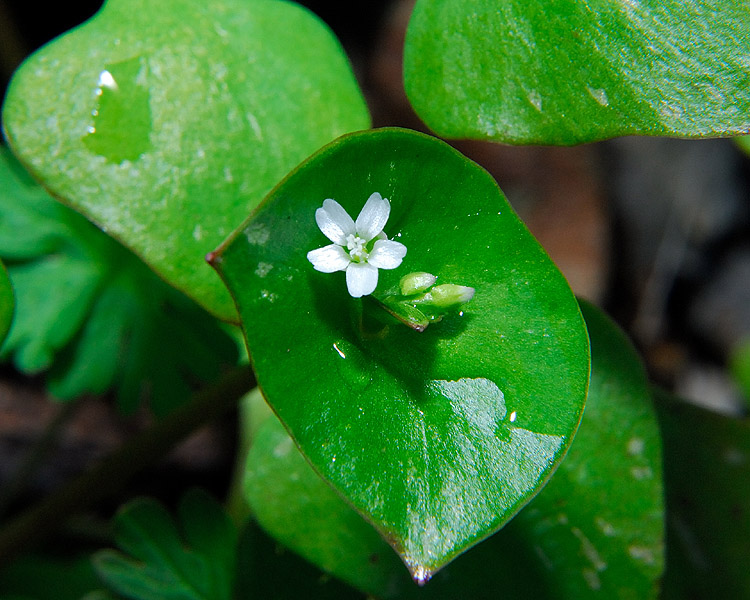
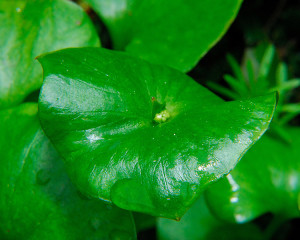
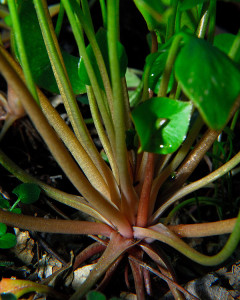
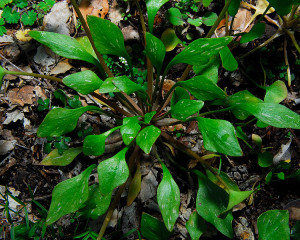

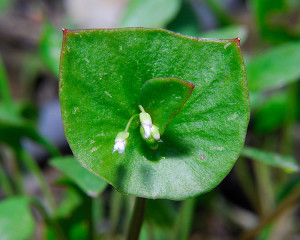
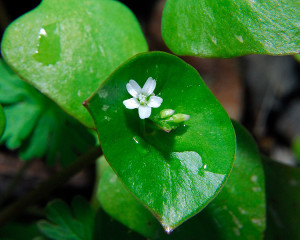
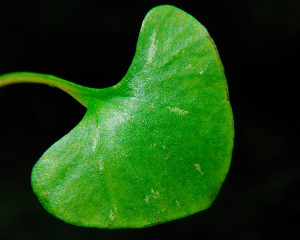
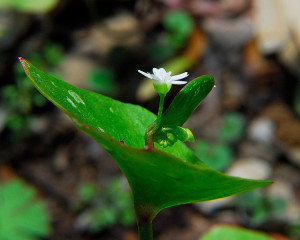







That’s one thing about me, I’m not very good at identifying native foliage plants. If it doesn’t have a flower on it, and looks like it might be a weed, I pull it lol. I promise I’m getting better at it with each educational post I see on these blogs, like yours 😀
I’ve never seen it in our area in Indiana. I’d love to know what it tastes like, if it is that easy to grow in winter. We do have common purslane growing here in summer, but those leaves are so small it is hard to gather enough to make a whole salad of it!
How cool that it grows wild where you are! When I opened this post on Blotanical, I assumed you were starting some seedlings of it and wanted to see how difficult they were to grow, as I’d considered growing it among my new salad crops this year, just out of curiosity. You’ll have to tell us how it tastes. I might be planting it next year. 🙂
I’m so excited to try it! I’d like to start some in my veggie beds (too late this year- there’s always next year!)
I like it. I’ve been growing a bit of it in the veggie garden as a nice filler for salads. It’s really good for you.
What an absorbing post on a facinating plant. The flowers might not be showy, but the way they grow is certainly interesting!
Winter purslane (winterpostelein) isn’t native in Europe, but is considered naturalized.
In my region it is not really endimic, but we deliberately sowed it (once) in the vegetable garden. It is a juicy saladgreen (although it has a rather ‘flat’ taste. And once you sow it, it comes back year after year, in the winter, when it not only adds fresh green to the menu, but also offers some kind of groundcover on the bare earth of the vegetable garden.
(I like to combine it with Cochlearia officinalis, commom scurvy-grass (the name already tells you it has a high Vitamin C content!), that is native to Europe (althoug very rare, nearly extinct in nature), and has a peppery taste.
So pleased to have found your blog.
‘Spinach’ was the first thought that came into my head when the pictures came up. Hope it will be as nice when cooked as when raw.
Esther
Hi!
I remember sharing miner’s lettuce with kids in Boulder Creek, where i used to do environmental ed–they loved it! I haven’t seen anything like it down here in the dry tropics, still learning the native plants. Enjoy!
I do find the flower and the leaves directly below very interesting. I also love the bright green (many of our plants have shades of gray or blue mixed with green). Let us know if you like adding it to your salad :^)
I like the Emerson quote. That is the cutest little bloom on the miner’s lettuce. I have a few pretty little weeds that I just can’t pull up. Pretty photos!
I’m a great believer in foraging for food among the native plants. In my case, it’s native wild berries — and it gives me such a nice feeling to go out before breakfast on a summer morning and gather berries for my breakfast cereal. -Jean
I like its look! If it is a weed, it is a cute one! Thanks for a well-written, informative post!
If I had miner’s lettuce, I might try to add some Claytonia sibirica. Very similar plant, but pretty pin flowers of maybe 1/3 inch. Of course I’m not sure it would taste as good…
Wild salads are awesome:P